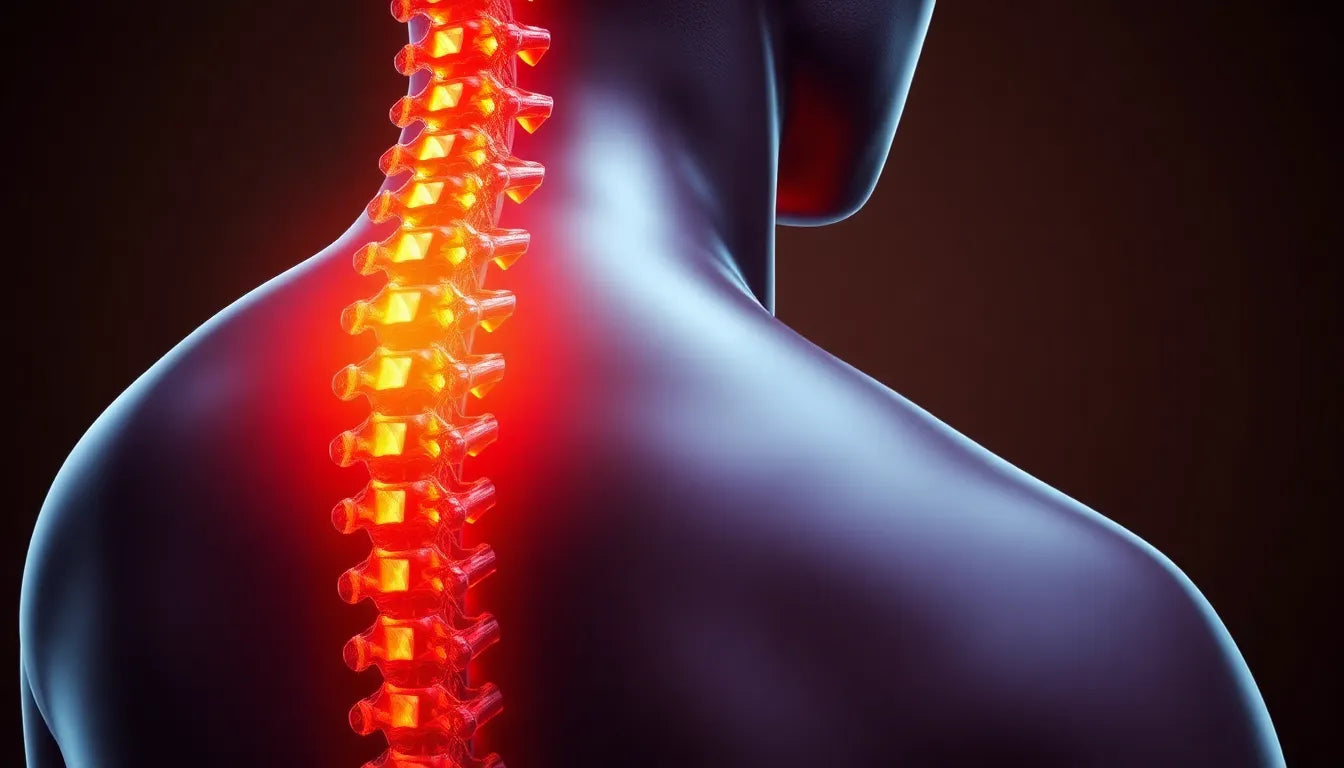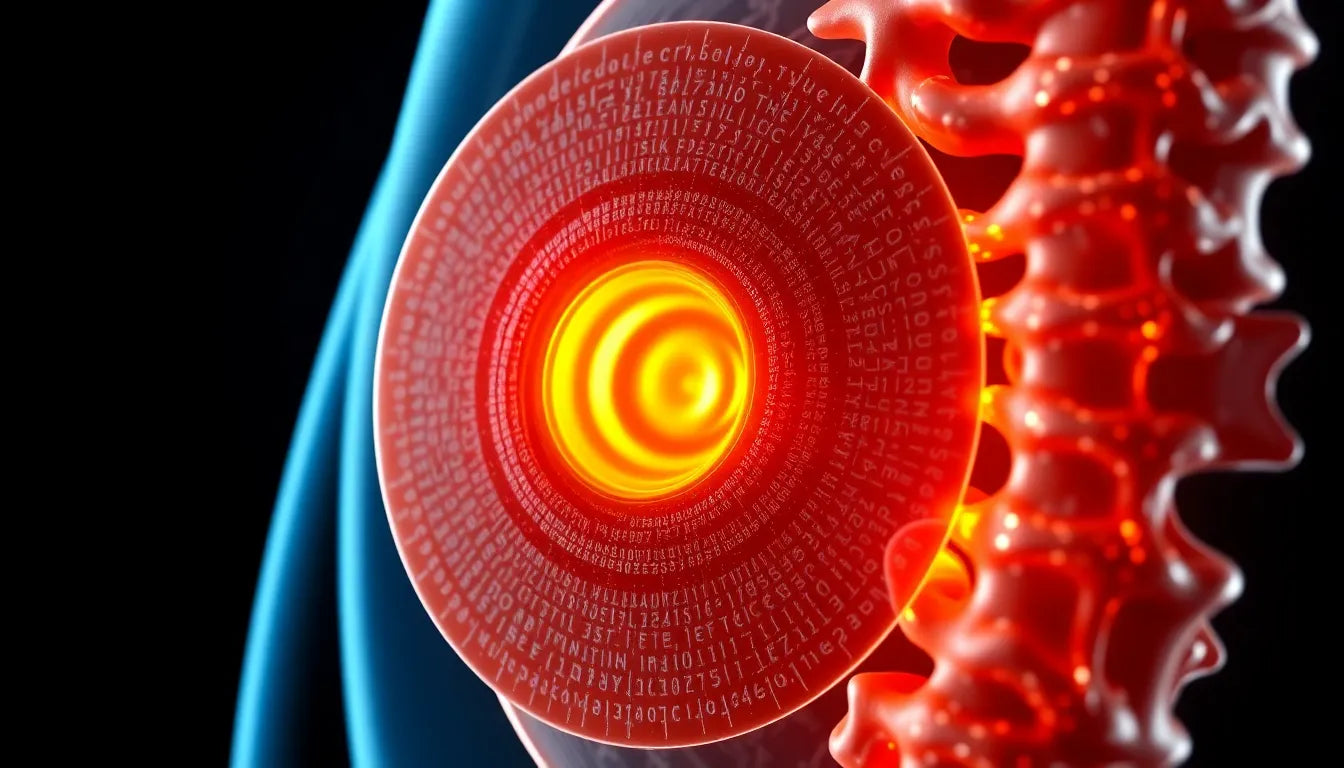Experiencing a herniated disc can be a daunting ordeal, often accompanied by significant pain and mobility challenges that can disrupt daily life. A herniated disc occurs when the soft cushion of tissue between the bones in your spine pushes out, often due to aging, injury, or improper lifting techniques. This condition can lead to discomfort and limit your ability to perform even simple tasks, making effective rehabilitation crucial.
understanding herniated discs
Herniated discs are a common spinal issue that can affect anyone, though they are more prevalent in individuals over 30. The spine is made up of vertebrae cushioned by discs that absorb shock. When these discs herniate or rupture, the inner gel-like core can press against nearby nerves, causing pain, numbness, or weakness in the back and limbs. Common causes include natural wear and tear, sudden injuries, or lifting heavy objects incorrectly. This condition can severely impact quality of life, making it difficult to move freely or engage in activities you once enjoyed.
the importance of rehabilitation
Rehabilitation is a vital component in the recovery process from a herniated disc. It focuses on restoring function, alleviating pain, and ultimately helping individuals regain their normal activities. Through a structured rehabilitation program, you can improve your mobility, strengthen your back, and reduce the risk of future injuries. Rehabilitation is not just about healing; it's about reclaiming your life and enhancing your overall quality of life.
setting the stage for recovery
A successful recovery from a herniated disc requires a comprehensive rehabilitation plan that is tailored to your specific needs and conditions. Professional guidance is invaluable in this journey, as healthcare providers can craft a personalized program that addresses your unique challenges and goals. This plan often includes a combination of physical therapy, exercises, and lifestyle adjustments designed to facilitate healing and prevent recurrence. With the right support and dedication, you can navigate the path to recovery and return to the activities you love.
physical therapy and personalized care
Physical therapy stands as a cornerstone in the rehabilitation of the back after a herniated disc. This therapeutic approach is not only about alleviating pain but also about restoring function and preventing future injuries. A personalized physical therapy plan is crucial as it addresses the unique needs of each individual, focusing on pain reduction, posture improvement, and the gradual reintroduction to daily activities. These plans often incorporate exercises such as walking, stretching, and light strength training, which are essential for reinforcing the back muscles and enhancing flexibility.
Working with a physical therapist can provide you with the guidance needed to perform exercises correctly and safely. This professional support ensures that your rehabilitation program is both effective and tailored to your specific condition, ultimately fostering a quicker and more sustainable recovery.
active rehabilitation and core stability
An active, self-managed approach to rehabilitation is vital in the recovery process. This method encourages patients to take an active role in their healing journey, promoting a sense of empowerment and control over their recovery. Progressive exercise regimens, such as the McKenzie Method and centralization exercises, are often recommended. These exercises focus on reducing pain through specific movements and postures that help the disc material move away from the nerves.
Core stability exercises are particularly important as they strengthen the muscles that support the spine, improving posture and reducing the risk of future herniation. Techniques such as pelvic tilts, bridges, and abdominal bracing are commonly included in rehabilitation programs to enhance core strength and stability.
step-by-step recovery phases
Rehabilitation after a herniated disc is typically approached in phases, each with specific goals and activities. Understanding these phases can help you set realistic expectations and stay motivated throughout your recovery journey.
- Acute inflammatory phase: This initial phase focuses on rest and managing inflammation. During this time, it's important to avoid movements that involve rotation or flexion of the spine. Pain management techniques and gentle movements are introduced to prevent stiffness.
- Repair and remodeling phases: As inflammation subsides, the focus shifts to gradually reintroducing movements and exercises. This phase includes progressively complex movements that aim to restore flexibility and strength. Physical therapy sessions are crucial during this stage to ensure exercises are performed correctly.
- Final phases: The last stages of rehabilitation concentrate on building strength and endurance to support a return to normal activities. This phase involves more challenging exercises that mimic daily activities, helping you regain confidence in your back's ability to handle various tasks.
Visualizing the recovery process through a timeline or table can be helpful in understanding the progression and key activities involved in each phase. This structured approach not only aids in tracking progress but also provides a clear roadmap to full recovery.
By adhering to a comprehensive rehabilitation plan that includes physical therapy, active rehabilitation, and a phased recovery approach, you can effectively reclaim your life and return to the activities you love. Remember, consistency and dedication are key to a successful recovery, and professional guidance is always recommended to ensure you are on the right path.
Quick exercises for symptom relief
For those dealing with a herniated disc, finding quick and effective exercises for immediate pain relief is essential. Gentle movements can help alleviate discomfort and promote healing. One such exercise is the prone press-up, which involves lying face down and gently pushing the upper body upwards with the arms while keeping the hips on the ground. This movement helps in reducing pressure on the disc and can provide significant relief.
Another beneficial exercise is the standing extension. Stand with feet shoulder-width apart, place your hands on your lower back, and gently lean backward. This exercise helps in stretching the spine and can aid in pain reduction. Incorporating basic stretching techniques, such as the cat-cow stretch, can also be beneficial. These exercises promote flexibility and help in maintaining mobility without putting undue stress on the spine.
Concluding thoughts on rehabilitation
Rehabilitation of the back after a herniated disc is a journey that requires patience, dedication, and a structured approach. Following a well-designed rehabilitation plan can significantly enhance recovery outcomes. It's crucial to consult with healthcare professionals to tailor a program that meets your specific needs and conditions. Professional guidance ensures that exercises are performed safely and effectively, reducing the risk of further injury.
Remember, reclaiming your life and returning to normal activities is achievable with the right support and commitment. By actively participating in your rehabilitation process and adhering to the prescribed exercises and lifestyle adjustments, you can improve your quality of life and prevent future occurrences.
Frequently Asked Questions
What is the best exercise for a herniated disc?
Exercises such as prone press-ups and standing extensions are often recommended for individuals with a herniated disc. These movements help alleviate pressure on the spine and promote healing. It's important to perform these exercises under professional guidance to ensure they are done correctly and safely.
How long does it take to recover from a herniated disc?
Recovery time from a herniated disc can vary significantly depending on the severity of the condition and adherence to a rehabilitation program. Generally, recovery can range from a few weeks to several months. Consistent participation in rehabilitation exercises and following professional advice are key to a successful recovery.
Can I prevent future herniated discs?
While it may not be possible to prevent all cases of herniated discs, certain measures can reduce the risk. Maintaining proper posture, especially when lifting heavy objects, is crucial. Additionally, engaging in regular core-strengthening exercises can provide support to the spine and reduce the likelihood of future disc issues.
Sources
- American Physical Therapy Association. "Physical Therapy Guide to Herniated Disc." ChoosePT.
- Mass General Brigham. "Herniated Disc Treatment." Mass General Brigham.
- The Prehab Guys. "Herniated Disc Rehabilitation Exercises." The Prehab Guys.
- Petersen Physical Therapy. "Exercises for Herniated Disc." Petersen Physical Therapy.
- Fardon, D. F., Williams, A. L., Dohring, E. J., Murtagh, F. R., & Gabriel Rothman, S. L. (2014). "Lumbar Disc Nomenclature: Version 2.0." Spine Journal.























